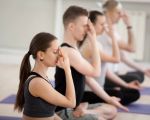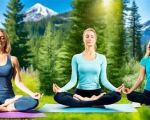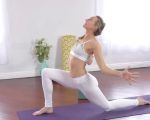- 1-Understanding-the-Power-of-Yoga-Breathing-Techniques-for-Relaxation
- 2-Basic-Pranayama-Techniques-to-Calm-the-Mind
- 3-Advanced-Breathing-Exercises-for-Deep-Relaxation
- 4-How-Breathing-Techniques-Impact-Mental-and-Physical-Health
- 5-Real-Life-Experiences-and-Success-Stories-with-Yoga-Breathing
- 6-Practical-Tips-for-Incorporating-Breathing-into-Daily-Life
- 7-Resources-and-Guidance-from-Free-Yoga-Links-for-Breathing-Practice
1. Understanding the Power of Yoga Breathing Techniques for Relaxation
Yoga breathing techniques for relaxation have been practiced for centuries as a foundational element of yogic tradition. Known as pranayama, these breathing methods harness the breath to calm the nervous system, reduce stress, and promote a deep sense of peace. In today’s fast-paced world, learning how to control and slow down your breath is a powerful tool to combat anxiety and improve overall well-being.
Unlike ordinary breathing, yoga breathing involves mindful control of inhale, exhale, and breath retention, which directly influences the body’s physiological responses. By engaging in these techniques regularly, individuals can cultivate inner calmness and enhance their focus, making yoga breathing an accessible practice for relaxation anytime and anywhere.
2. Basic Pranayama Techniques to Calm the Mind
Beginning with simple pranayama exercises is an excellent way to introduce yourself to yoga breathing techniques for relaxation. One popular method is Nadi Shodhana or alternate nostril breathing. This technique involves breathing slowly through one nostril at a time, balancing the body’s energy channels and inducing tranquility.
Another beginner-friendly practice is Ujjayi breath, characterized by a gentle constriction at the back of the throat, producing a soft oceanic sound. This breath encourages steady oxygen flow and helps anchor your mind during meditation or yoga poses.
By practicing these foundational techniques consistently, you create a groundwork for deeper relaxation and enhanced breath awareness.
3. Advanced Breathing Exercises for Deep Relaxation
Once comfortable with basic techniques, advanced exercises like Kapalabhati (skull-shining breath) and Bhramari (bee breath) offer profound relaxation benefits. Kapalabhati is an energizing breath involving forceful exhalations that detoxify the respiratory system and awaken the mind. Conversely, Bhramari uses a humming sound during exhalation, which calms the nervous system and alleviates mental tension.
These advanced practices should be approached with care, ideally under guidance, to maximize benefits and avoid strain. Integrating them into your routine can significantly deepen your relaxation experience.
4. How Breathing Techniques Impact Mental and Physical Health
Yoga breathing techniques for relaxation have measurable effects on both the mind and body. Scientifically, controlled breathing stimulates the parasympathetic nervous system, lowering heart rate, reducing blood pressure, and decreasing cortisol levels—the stress hormone. These physiological changes promote feelings of calm and reduce anxiety symptoms.
Mentally, these practices enhance concentration, emotional regulation, and resilience against daily stressors. Physically, improved oxygenation supports muscle relaxation and boosts energy levels. Consistent practice leads to an integrated mind-body balance critical for health and happiness.
5. Real-Life Experiences and Success Stories with Yoga Breathing
Many individuals report transformative effects after incorporating yoga breathing techniques for relaxation into their daily lives. For example, Sarah, a corporate professional, credits alternate nostril breathing for helping her manage work-related anxiety and improve sleep quality. She shares how a simple five-minute breathing exercise before meetings calms her nerves and boosts confidence.
Similarly, John, a yoga instructor, found that advanced pranayama practices significantly enhanced his meditation depth and overall emotional well-being. Stories like these highlight the accessibility and effectiveness of yoga breathing, inspiring others to begin their journey.
6. Practical Tips for Incorporating Breathing into Daily Life
Integrating yoga breathing techniques into your daily routine requires intention and consistency. Start by setting aside a few minutes each morning or evening dedicated solely to breathwork. Use reminders or apps to maintain your practice, especially during stressful moments.
Practicing in a quiet, comfortable environment enhances focus, but breathing exercises can also be adapted for busy situations, such as taking deep breaths during a commute or before a presentation. Remember, even brief mindful breathing sessions contribute to relaxation and mental clarity.
7. Resources and Guidance from Free Yoga Links for Breathing Practice
For those eager to deepen their understanding and practice of yoga breathing techniques for relaxation, Free Yoga Links offers comprehensive resources, guided sessions, and expert tips. These resources provide accessible pathways for beginners and experienced practitioners alike, ensuring you find the best techniques suited to your needs.
Exploring Free Yoga Links’ curated content helps maintain motivation, discover new breathwork methods, and connect with a community dedicated to holistic wellness.
Embrace the power of breath to cultivate calm, restore balance, and enhance your quality of life through consistent and mindful yoga breathing practice.








